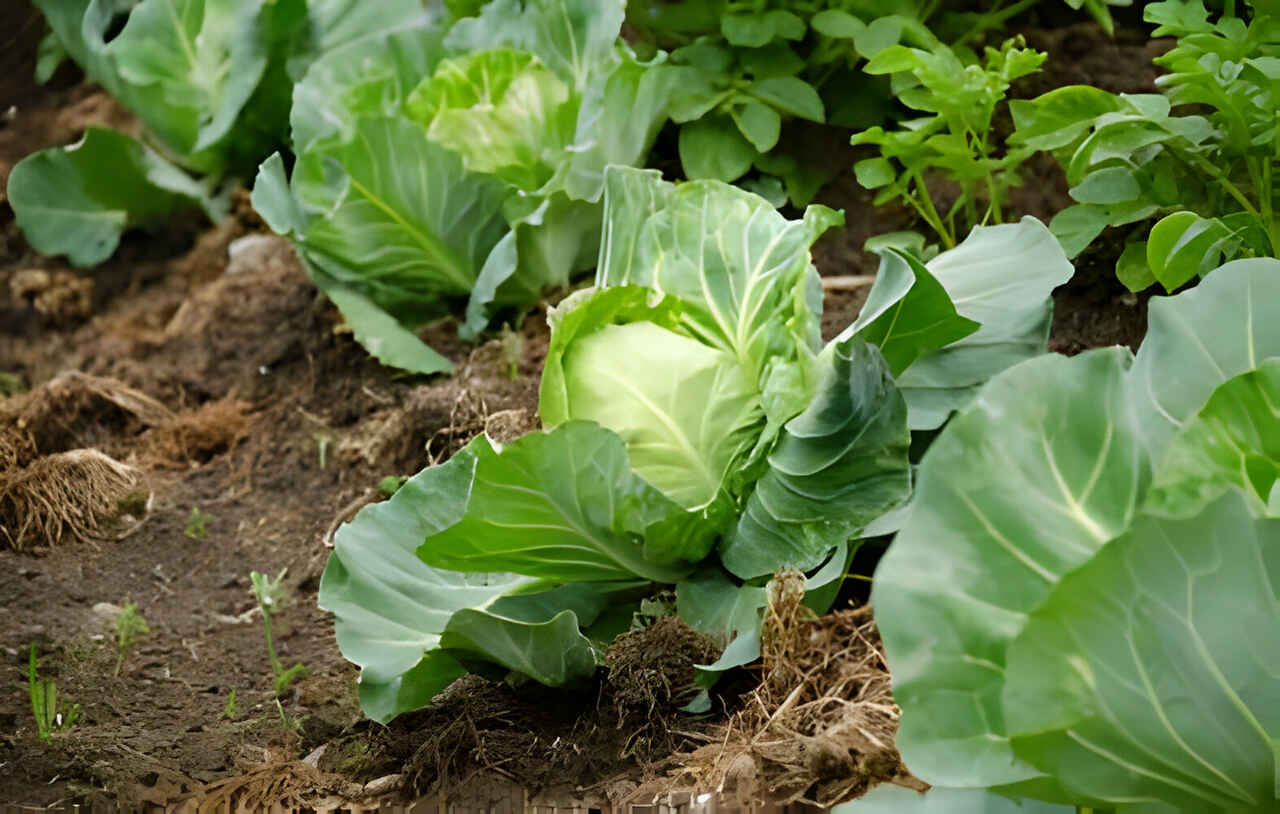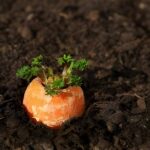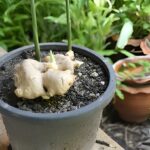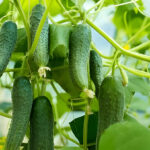Have you ever thought about growing your own cabbage, but didn’t know where to start? Or perhaps you’re an experienced gardener looking to expand your repertoire. Either way, this guide is for you.
Growing cabbage from seeds is a rewarding endeavor that offers numerous benefits. Not only does it provide you with fresh, organic produce right at your fingertips, but it also allows you to experience the joy and satisfaction of nurturing a plant from seed to harvest.
In this guide, we’ll walk you through the entire process of growing cabbage from seeds. We’ll cover everything from choosing the right seeds, preparing for planting, caring for your seedlings, all the way to harvesting your cabbage.
So, let’s start this exciting journey of gardening!
1. Choosing the Right Cabbage Seeds
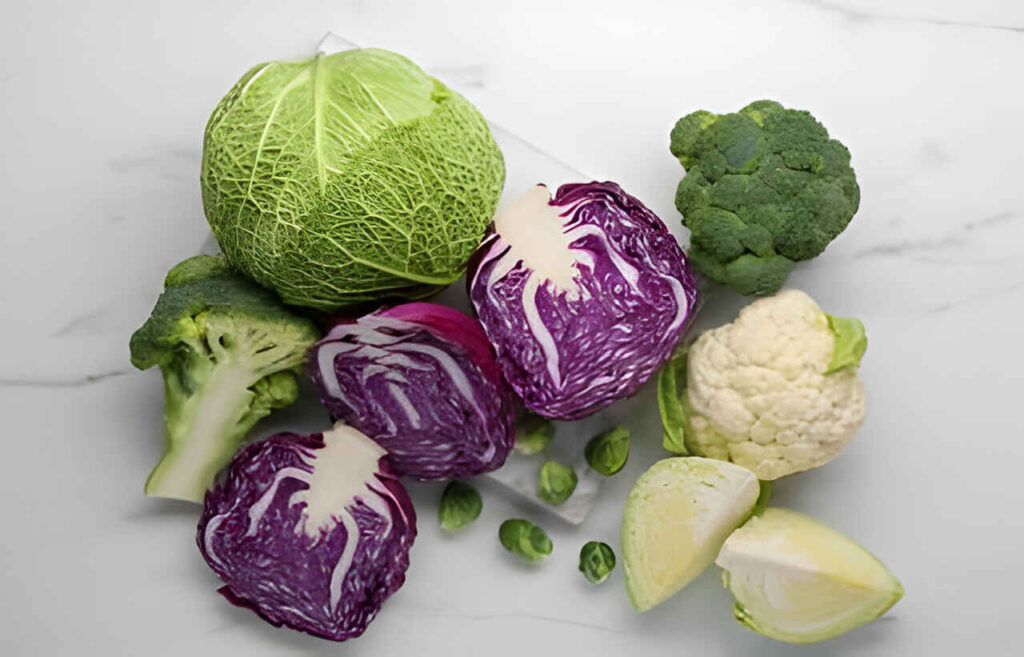
Selecting the right cabbage seeds is the first step towards a successful harvest. Here are some factors to consider:
Differences Between Varieties
There are numerous varieties of cabbage, each with its own unique characteristics. Some varieties are better suited for certain climates or cooking methods. For example, Savoy cabbage has crinkled leaves and is perfect for salads, while Red cabbage is great for pickling or braising.
Recommendations for Beginners
If you’re new to growing cabbage, consider starting with a variety that’s known for its ease of growth and resistance to disease. Green cabbage varieties like Golden Acre and Copenhagen Market are popular choices for beginners.
The best cabbage variety for you will depend on your personal taste, your local climate, and the specific conditions of your garden. Don’t be afraid to experiment with different varieties to find the one that works best for you!
2. Preparing for Planting
Before you start planting your cabbage seeds, there are a few preparatory steps you need to take:
When to Plant Cabbage Seeds
The best time to plant cabbage seeds depends on the variety and your local climate. Generally, cabbage seeds can be started indoors 6-8 weeks before the last spring frost date, or sown directly outdoors 2-4 weeks before the last spring frost date.
Preparing the Soil
Cabbage prefers well-drained, fertile soil with a pH between 6.5 and 7.5. Before planting, enrich your soil with compost or a balanced organic fertilizer to ensure it has the necessary nutrients.
Setting Up the Right Environment
Cabbage is a cool-weather crop and does best when grown in temperatures between 45°F and 75°F. If you’re starting your seeds indoors, make sure they’re in a location that stays within this temperature range.
3. Planting the Cabbage Seeds
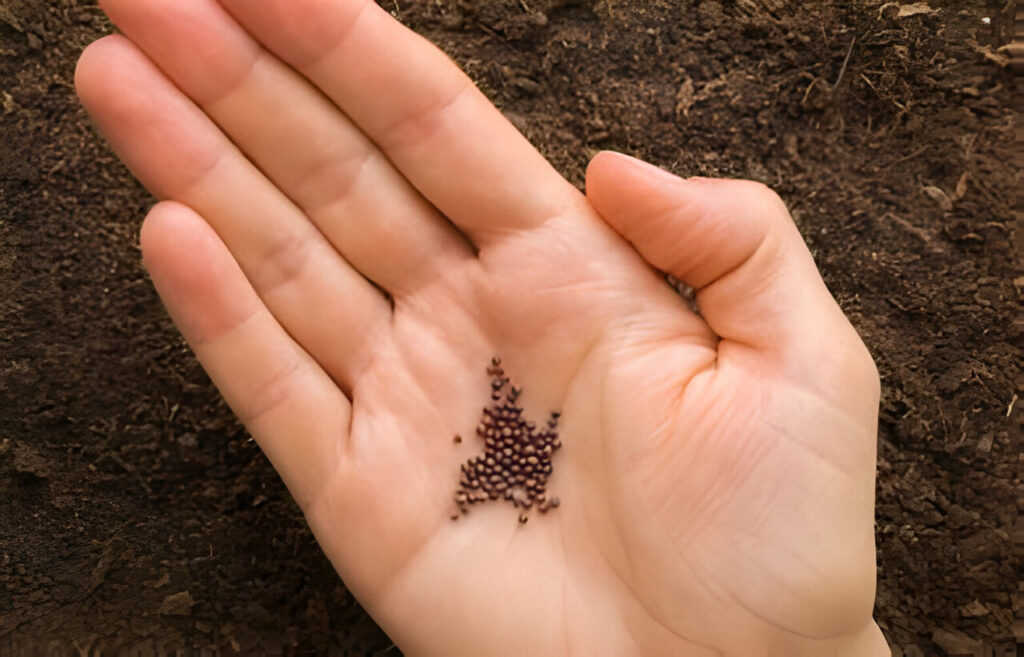
Once you’ve prepared your soil and chosen the right cabbage seeds, it’s time to plant. Here’s how:
1. How to Sow the Seeds: Plant the cabbage seeds about 1/4 inch deep in the soil. If you’re planting multiple seeds, space them about 2 inches apart to allow room for growth.
2. Ideal Depth and Spacing: Once the seedlings have grown a few true leaves, thin them out so that they’re spaced about 12-24 inches apart (depending on the variety). This gives each plant enough space to grow to its full size.
3. Watering After Planting: After planting the seeds, water the soil gently but thoroughly. The soil should be moist, but not waterlogged.
Planting cabbage seeds is just the beginning of your gardening journey. With proper care and attention, these tiny seeds will grow into robust, productive plants.
4. Caring for Your Cabbage Seedlings
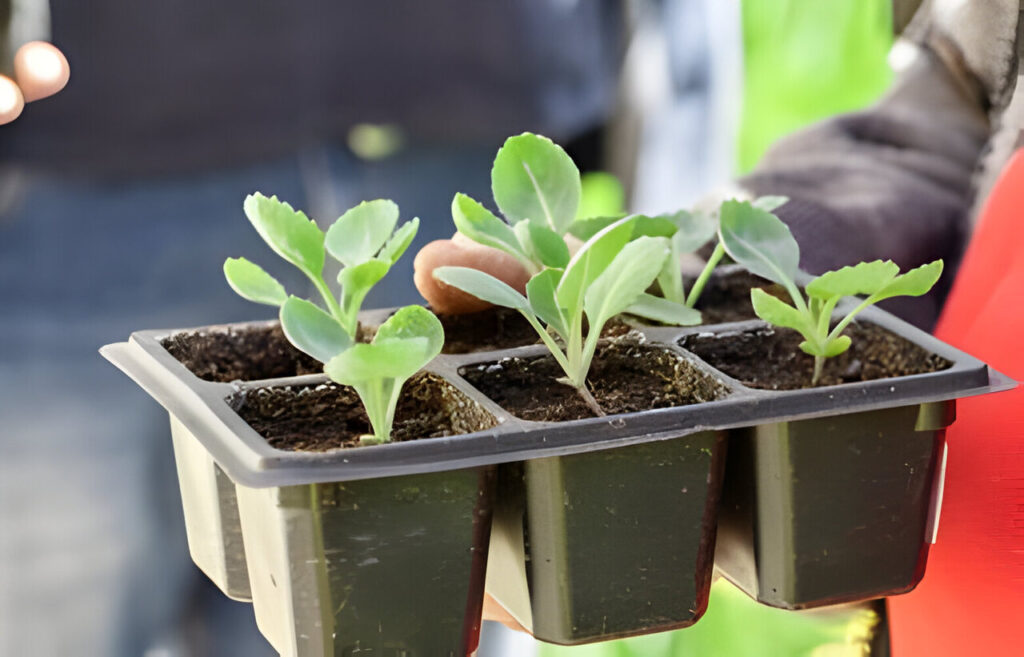
After your cabbage seeds have sprouted, they’ll need some care and attention to thrive. Here’s what you need to know:
Watering
Cabbage seedlings prefer consistently moist soil. Water your seedlings regularly to keep the soil from drying out, but be careful not to overwater. Overwatering can lead to root rot and other diseases.
Sunlight
Cabbage seedlings need plenty of sunlight to grow. They should receive at least 6 hours of direct sunlight each day. If you’re growing your seedlings indoors, you may need to use a grow light to ensure they get enough light.
Fertilizer
Cabbage is a heavy feeder and will benefit from regular feeding. Use a balanced, all-purpose fertilizer and follow the package instructions for application rates.
5. Transplanting Cabbage Seedlings
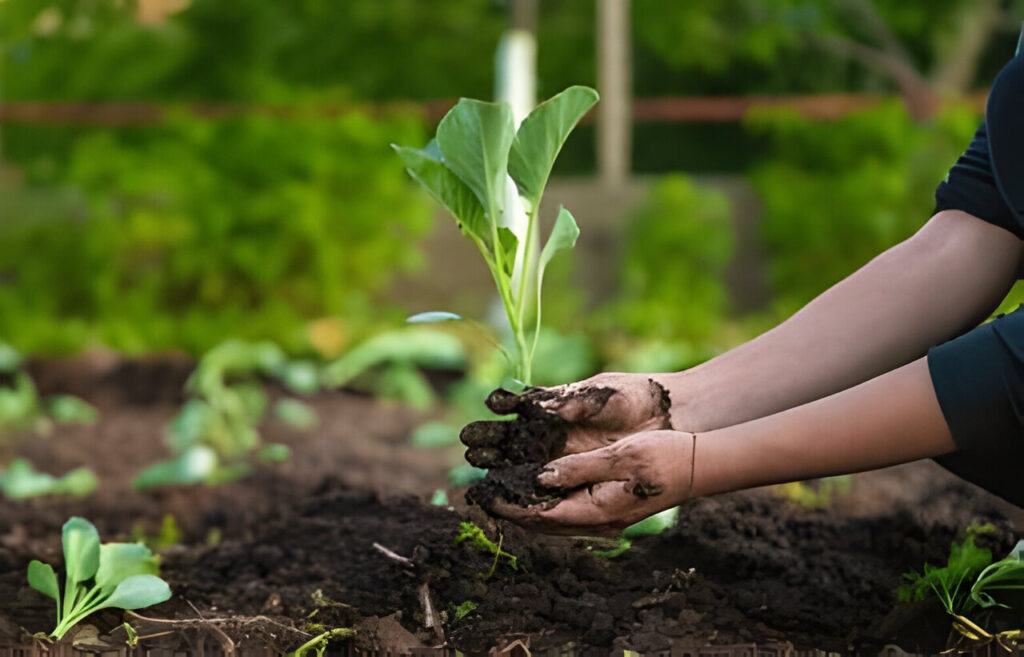
Once your cabbage seedlings have grown a few true leaves and are strong enough, it’s time to transplant them to their final growing location. Here’s how:
When and How to Transplant
The best time to transplant cabbage seedlings is when they are 4-6 weeks old and have at least two sets of true leaves. To transplant, carefully dig up each seedling, trying to keep as much of the root system intact as possible. Plant each seedling in its new location, burying it up to the first set of true leaves.
Acclimating Seedlings to Outdoor Conditions
If you started your seeds indoors, you’ll need to acclimate your seedlings to outdoor conditions before transplanting. This process, known as hardening off, involves gradually exposing your seedlings to outdoor conditions over a period of a week or two.
Transplanting is a critical step in the growth of your cabbage plants. With careful handling and proper acclimation, your seedlings will transition smoothly to their new environment and continue their journey towards a successful harvest.
6. Common Problems and Solutions
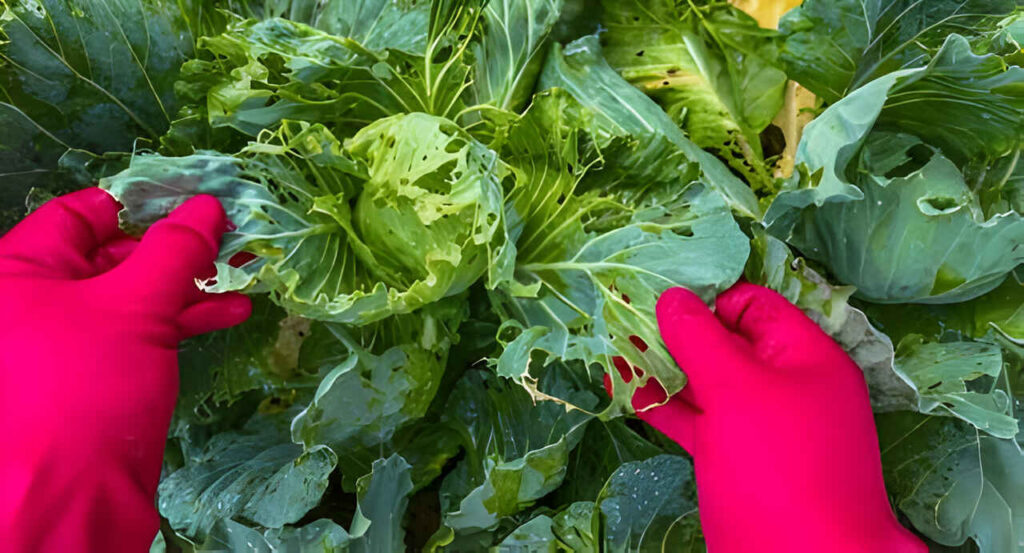
Like any garden plant, cabbage can encounter a few problems. Here are some common issues and their solutions:
Problem 1: Cabbage Loopers or Cabbage Worms
These pests can be controlled with organic pesticides or by introducing beneficial insects, like ladybugs and lacewings, that prey on these pests.
Problem 2: Clubroot
This is a soil-borne disease that causes swollen and deformed roots. The best solution is prevention: rotate your crops and avoid planting cabbage in the same spot where clubroot has been a problem in the past.
Problem 3: Split Heads
This can occur when the cabbage head gets too much water too quickly. Maintain consistent watering practices to prevent this.
Problem 4: Yellow or Wilting Leaves
This could be a sign of under or overwatering, or a nutrient deficiency. Check your watering practices and consider a soil test to check nutrient levels.
Every gardener encounters problems from time to time. Don’t be discouraged. With patience and persistence, you can overcome these challenges and grow a successful crop of cabbage.
7. Harvesting Your Cabbage
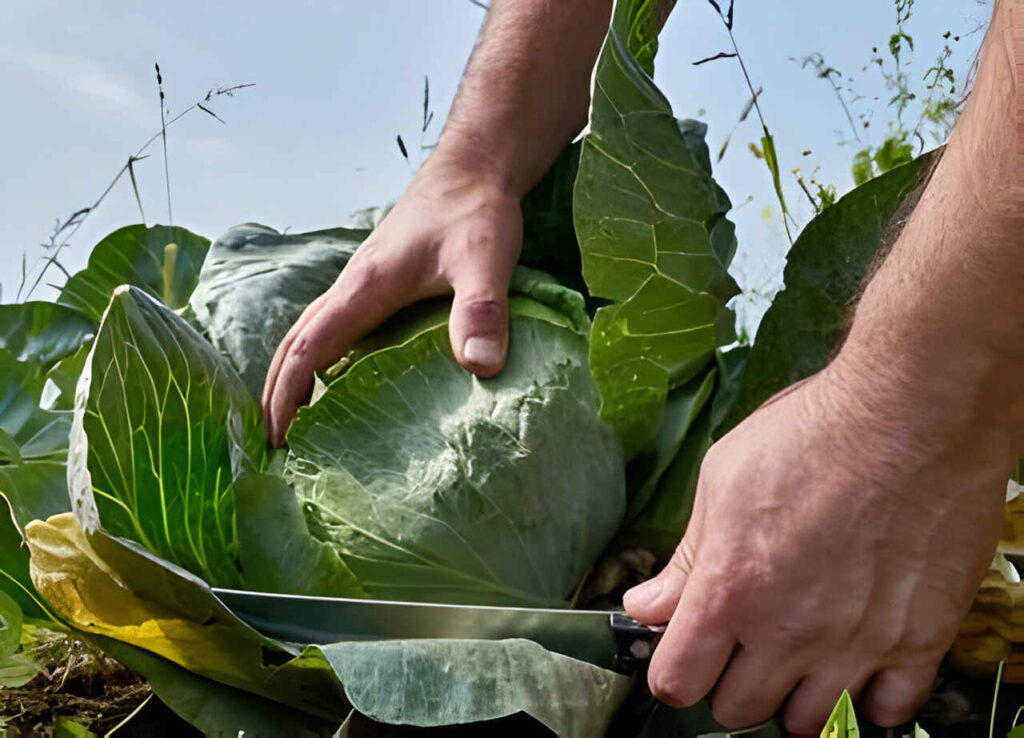
After weeks of caring for your cabbage plants, it’s finally time to enjoy the fruits of your labor. Here’s how to harvest your cabbage:
When and How to Harvest
The right time to harvest your cabbage depends on the variety and your personal preference. Generally, cabbage is ready to harvest when the heads are firm and the size you want.
To harvest, simply cut the head off at the base of the plant with a sharp knife.
Storing and Using Your Cabbage
After harvesting, you can store your cabbage in the refrigerator for up to two weeks. For longer storage, consider freezing or pickling your cabbage. And of course, there are countless ways to enjoy your home-grown cabbage, from coleslaw and sauerkraut to stir-fries and soups.
Conclusion
Growing cabbage from seeds can be a rewarding and enriching experience. It allows you to enjoy fresh, home-grown produce, and provides an opportunity to learn more about the fascinating world of gardening.
From choosing the right seeds and preparing for planting, to caring for your seedlings and finally harvesting your cabbage, we’ve covered every step of the process in this guide. We hope that this information inspires you to start your own cabbage garden and experience the joy of harvesting your own produce.
FAQs
Generally, cabbage seeds can be started indoors 6-8 weeks before the last spring frost date, or sown directly outdoors 2-4 weeks before the last spring frost date.
There are numerous varieties suitable for growing from seeds. Some beginner-friendly ones include Golden Acre and Copenhagen Market.
Cabbage seedlings need regular watering, plenty of sunlight, and appropriate feeding with a balanced, all-purpose fertilizer.
